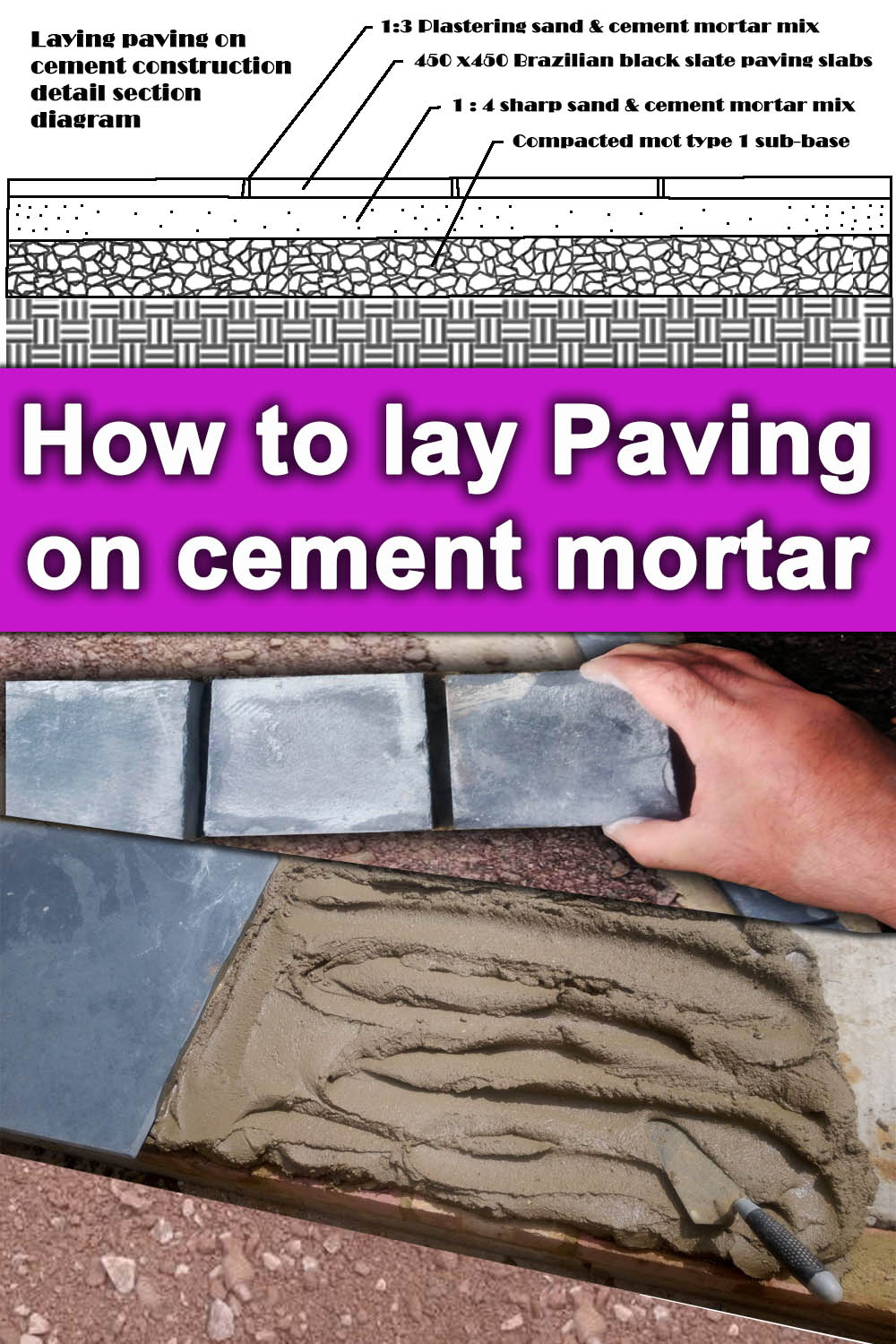|
This article contains affiliate links
Grass is one of the most common garden surfaces for good reason. Grass lawns are lush and multifunctional hosting a wide range of activities outdoor activities.
However, there are also some serious disadvantages to lawns especially during wet weather. Therefore it is often sought to lay paving slabs onto grass. Replacing lawn with paving can provide a more maintenance free and practical outdoor surface. In this article I will explain how to replace grass with paving slabs correctly. I will include some considerations of replacing grass with paving such as installing correct drainage, sub-base and jointing. Can you lay paving slabs straight on grass?
It is never advised to lay paving slabs straight onto grass for a few reasons I will discuss this below. Firstly it is very rare lawns are flat enough to lay slabs consistently level. Furthermore, seasonal variations in ground moisture can lead to paving shifting and moving. In order to lay paving slabs on grass you will need to remove the soft topsoil and install a robust sub-base. You will then need to lay your paving on a 30-40mm layer of cement based mortar to stick them into position. Perhaps the only acceptable scenario where you would put paving slabs directly onto grass is stepping stones.
At the very least it is best to base these upon a level bed of compacted sharp sand.
However, if you laid multiple slabs together this way as a patio they would move and displace too much! Any jointing or pointing material would deteriorate between the gaps and weeds would become established. Eventually your paving slabs would sink and become overgrown with a layer of weeds and grass. Planning your paving
If you are planning to replace a grass lawn with paving it is important to plan correctly. Do you want the whole area to be paving? What shape patio do you want? What is your budget? Planning your project correctly will enable you to get a good idea of what it will involve and cost. It is more efficient to get your project right first time with no cutting corners. Below I will break down and explain the considerations and stages of replacing grass with paving slabs. Implement a drainage strategy
Drainage is a very important consideration when replacing grass with paving slabs. As grass grows upon natural topsoil it naturally absorbs rainwater like a big sponge. However, when you replace grass with paving the water has fewer places to permeate to. This can lead to flash flooding and boggy gardens. If you are installing a paved surface where it was once grass you need to implement a drainage strategy.
This could involve gently sloping the paving to a channel drain or a large flower bed. The most typical patio drainage systems are plumbed into a soak-away system.
For more information about implementingpatio drainage visit our article on the subject here. Excavation
One of the most common pitfalls of replacing grass with paving is not removing the soft topsoil. This top layer of soil is full of organic matter or ‘humus’ which can move and displace when wet. If this soil is not removed before the paving is laid the surface will shift and crack. Consequently all areas of grass should be excavated to a minimum depth of 150mm. The soil should then be removed leaving no loose particles in the base. You will then need to spread a compactable sub-base to the area. Laying your sub-base
A paving sub-base is typically a compactable aggregate such as Mot type 1 or crushed concrete. This is spread to a depth of around 100mm or 150mm for vehicular traffic and compacted. This sub-base will then allow you a strong and stable base to lay your paving slabs. Laying your paving
Once you have laid and compacted your sub-base you are ready to lay your paving. You will need to mix a 1:4 sharp sand to cement mortar mix using a cement mixer. Add plasticiser and water until your mix reaches the consistency of bricklayer’s mortar. Bed down your paving slabs onto the mix so there are no voids under the paving. You want your paving to be as flush and level as possible. Use a long spirit level to level your paving as your work. Jointing your paving
When you’re paving is set after 24 hours you can joint the gaps in between the pavers. This is best done using a 1:3 plastering sand and cement mortar mix. For our full guide on how to grout paving slabs visit our article here. FAQ'SHow do you build a cheap patio on grass?
Probably the cheapest way to build a seating area on grass would be using gravel. Gravel is generally cheaper than paving slabs and faster to lay. However, just because you are using gravel it doesn’t mean you should not add a sub-base. You should still remove the topsoil and spread a minimum sub-base of 60mm. Alternatively you can use cheaper paving slabs. However, it is never advised to lay less base to save money, this normally results in spending more in the long run. Can you lay pavers without a base?
If you lay pavers without a base they will move and shift over time. Tables and chairs will not sit firmly upon the surface and will rock. Eventually soil will rise up in between the gaps leading to weed establishment. The result will be a messy surface with loose pavers which is not suited for purpose.
Thank you for reading our article on how to lay paving slabs on grass. If you require garden patio or paving services do not hesitate to contact us. Based in Amersham, Buckinghamshire we provide a wide range of landscaping services I will link to other relevant articles below you may also find useful.
'As an Amazon Associate I earn from qualifying purchases'
0 Comments
Leave a Reply. |
The Author
|
Landscaping services across Buckinghamshire, Amersham, Aylesbury & High Wycombe
Hyde Heath, Amersham, Buckinghamshire |
|











